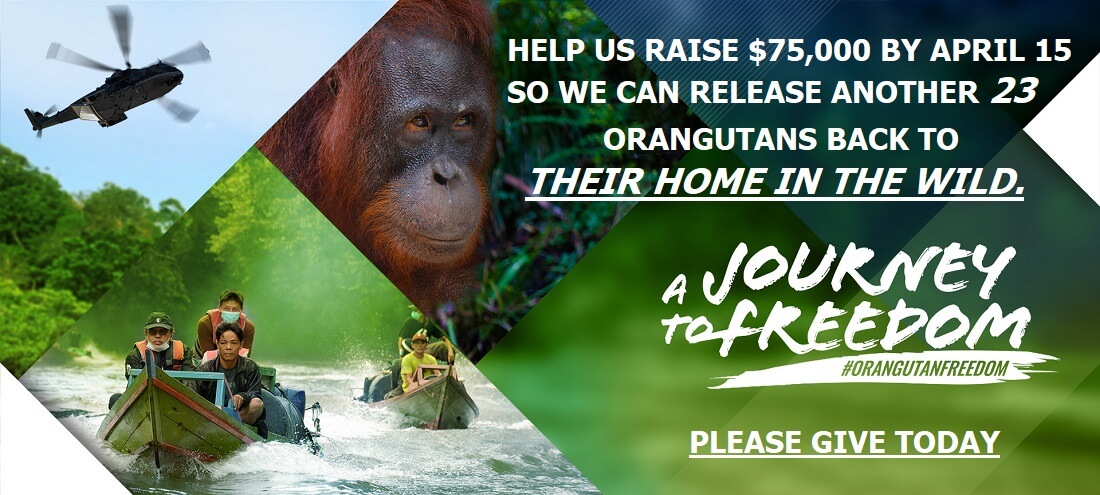Social life of orangutans
Social Life Of Orang-Utans
BruDirect.com: Elizabeth L. Bennett: Sunday, 27 December 2009
To say that orang-utans have much of a social life is rather misleading.
In the wild, orang-utans are the least social, and least sociable, of any diurnal primate anywhere in the world.
For both Sumatran and Bornean orang-utans, adult males almost always live alone, and adult females travel only with their latest infant and possibly one juvenile offspring. Even adolescents usually live on their own, although they occasionally form temporary groups, either just with other contemporaries, or following an adult of either sex for a short time. Otherwise, the only time different orang-utans generally meet is when several animals all pile in to feed at a particularly large fruiting tree such as a huge strangling fig laden with fruits. Even then, the different individuals usually arrive and leave with almost no visible interaction with any of the others.
On the other hand, females at least encounter other animals relatively often. Each female orang-utan lives in a relatively discrete area of forest. The exact size varies somewhat between sites, but is between 60 ha and 500 ha. The ranges of different females overlap, sometimes quite a lot.
When a young female grows up and leaves her mother, she is likely to set up her own home very nearby, so the chances are that females in nearby and overlapping ranges are related. So as an adult female roams round her home patch of forest, it will not be very long before she encounters another female, who will either be a relative or another familiar animal. When two females do meet, though, they do not exactly greet each other with open arms, but are more likely to pass by with little or no direct interaction.
Even if related, nearby females are highly unusual amongst primates in that they do not actively seek each others’ company, do not groom each other, and do not support each other in interactions with other orangutans.
And they bring up their offspring with no help from others. So the only real bond in orang-utan society is that between a female and her own young offspring until they are old enough to move away and fend for themselves.
Even so, it is likely that a female does keep track of who is doing what in her neck of the woods, through occasional meetings, calls, and seeing fresh nests. Adult males are even more antisocial.
They actively avoid other adult males, and if ever two adult males do meet, there is almost always an aggressive confrontation. Although fights have only rarely been seen, the large numbers of scars and broken figures on adult males indicate that fighting occurs, and can be fairly violent.
Adult males produce what are known as long calls . These are only made by mature males with full face flanges and throat sacs, and the calls are so loud, they can be heard up to a kilometre away.
The call starts as a series of quiet, bubbling grunts, then builds up into a full-blown gravelly roar. It is often accompanied by vigorous branch shaking, and the male looks even larger and more impressive than usual because his hair stands on end during the displays.
The long calls seem to have various purposes, and not all are well understood. There is no doubt that one of their main functions is to space out adult males, and to prevent them from bumping into each other inadvertently.
A male will always call in the direction in which he is about to travel, and his face flanges possibly help to focus the call that way. He is also most likely to call when he is about to travel a long way, so the call is probably telling the other orangutans in the new area that he is coming.
This is to allow the other males to keep out of his way, especially any younger males who might be around. It might also attract females, and be telling them that a large and handsome mate is in the neighbourhood.
Unlike females, not all males have a discrete patch of forest in which they stay for most or all of their adult lives. Some males do remain in one area for several years or more, and these are invariably fully mature.
Such animals are known as resident males, and their ranges overlap those of several females. But then, suddenly one day, a resident male will disappear, leaving his normal home area completely, sometimes for several years before he reappears.
The reason for this is unknown but might be because all of the females in his own area have recently produced offspring, so it will be many years before they become fertile again. In which case, his best option might be to develop a wanderlust and go to look for other females further afield. In addition to these resident males, there are also so-called wandering males.
These are usually adolescents, but can also be adults. They seem to have no fixed abode, but range over huge areas of forest, often being chased away by resident males if they come too close.
Sumatran orang-utans do tend to be just slightly more social than Borneans, and pairs, or even small aggregations of animals are occasionally seen.
This is possibly because, unlike in Borneo, there are tigers in Sumatra which would make a good meal of an orang-utan. So sticking together just that bit more means the animals are more likely to detect a hungry tiger on the prowl, and less likely to become its dinner.
This leads to the question, though, of why be solitary in the first place? The most likely answer is food. Orang-utans are large animals, and need to eat a huge amount. Their main foods are fruits, which are often sparse in the forest, and any one tree is often small, or does not have that much food. So if you have to eat a vast quantity yourself, there is just not enough in any one food source to be able to share it. Which means your only option is to travel alone.
The only time you can afford to share is when there is a bumper crop of fruit, and that is when several orangutans do all feed from the one tree. The one major exception to this solitary lifestyle is when males and females mate. Sometimes the female mates willingly, but at other times she is obviously an extremely unwilling participant.
Willing matings usually take place during a period of what is known rather charmingly as consortship, and the male is almost invariably a fully mature adult. These consortships are the only times when adults spend significant lengths of time together.
The signals to start a consortship can be given by either the adult male or adult female, and the pair then travel around closely together from three to about eight days, although in Sumatra, some consortships will run into months.
During that time, the two animals step away from their usual antisocial behaviour, and are extremely tolerant of each other, with the male allowing the female to take food from his hand or even his mouth. Matings occur several times during the consortship.
Both animals join in willingly, and mating can be initiated by either partner. Even such apparent harmony between two individuals does not mean that they only enjoy one partner. Both males and females mate with different animals at different times, and a receptive female can indulge in consortships with more than one male even during one reproductive cycle. Nonetheless, females are very picky about their choice of partner.
They actively solicit certain males, and strongly refuse the advances of others. The most favoured males are usually the older, mature ones with their full magnificence of face flanges, throat sac and beard.
This system would seem to leave a lot of younger and less attractive males out in the cold without a mate. Some adolescent males do form consortships with adolescent females. Many are not satisfied with this though, and try to mate with adult females.
Adult females rarely accept this, and are highly unwilling to mate with young males. Undeterred, a young male will often follow a female, and even form a short consortship with her. If the female continues to refuse his advances, his superior size and strength are used to overpower and rape her.
Such relationships are either terminated by the arrival of an adult male who displaces the youngster, or else by the female finally managing to get away. Interestingly, there is some evidence that such rapes rarely result in pregnancy, possibly because at the peak period of fertility, the female is most likely to be found with her preferred fully adult male.
THE AUTHOR
Born in the United Kingdom, Elizabeth Bennett went to Nottingham University to read zoology, and then on to Cambridge University where she gained her PhD for research on primates in Peninsular Malaysia.
She then moved to Sarawak in 1984, working for the Wildlife Conservation Society (WCS) and WWF Malaysia to undertake the first ever detailed study of the ecology of proboscis monkeys. She has been in Sarawak ever since, conducting many different projects with the Sarawak Forest Department and WCS.
These included studying the effects of different types of human disturbance on wildlife, especially logging and hunting, and turning the results into policy recommendations. She has been involved in developing and running training programmes for Malaysian wildlife scientists, and has published more than 50 scientific and popular articles on wildlife and conservation in the region.
She is a full-time staff member of WCS, and is working with the Sarawak Forest Department to write, and now to implement, a Master Plan for Wildlife in Sarawak.
This article forms the final chapter of her book The National History of Orang-Utan published by Natural History Publications (Borneo) Sdn Bhd, Kota Kinabalu, Sabah.





